|
There are
quite a few days with not too much happening apart
from the usual routine (exercises, preparing food,
dishes, usual household, maintenance and some repairs
(fortunately not too many lately). A little kiting,
and sometimes some excursions ashore. Here a summary
of our time in the 'North' - so compressed it
looks like a holiday in itself! J :
Rakiraki is a
district in Fiji's Ra Province in Northern Viti Levu and also
the name of the closest 'town' (there are only about 4
streets) to go shopping when in Nananu-I-Ra.
|
The district
counts about 30.000 people of which about 3.500 live
in Rakiraki's
principal urban centre. By the way, the entire Fijian
pop. is approx 900.000.
Rakiraki is an
area often said to portray Fijian patriotism. Many
noted Fijian politicians have originated from this
area, such as Sidiq Koya, who fought for Fijian
workers'
rights. Also, apparently quite popular and famous
international rugby player Sireli Bobo comes from this
region and had worked as so many here cutting sugar
cane and diving for corals.
|
|
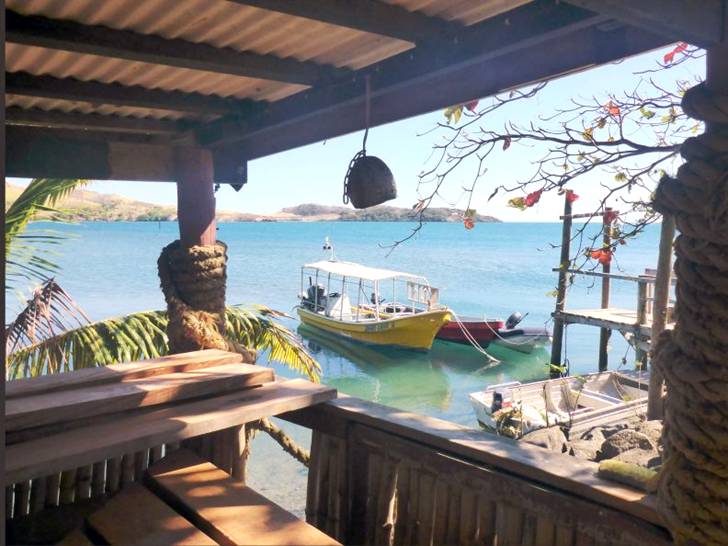
In fellow
sailor Philip's
dinghy we cross the 2nm from our anchorage to the Ellington
Wharf
on the main island to share a taxi.
|
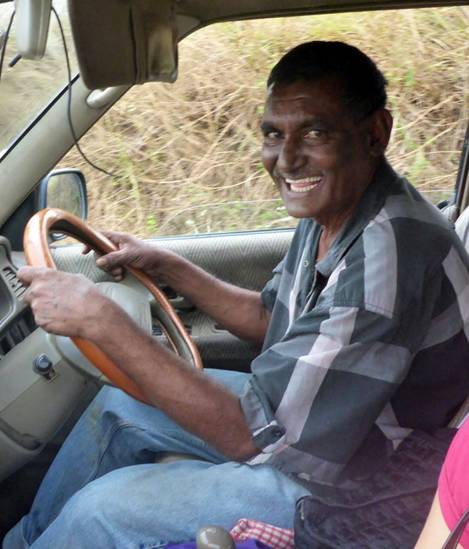
I got along
very well with our driver Ganguli. Despite having
trouble understanding a lot of his English we were
going to meet a few more times…
|
|
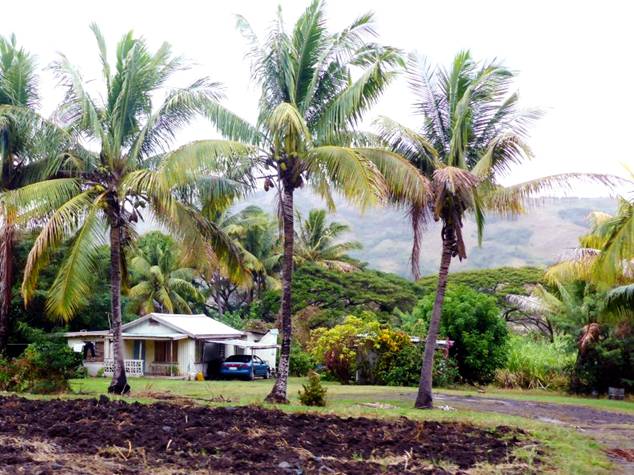
Some
impressions from the scenery along the 20 min drive.
It's very rural, most
people plant Kasava, Papaya and few other local
fruit and vegetable.
|
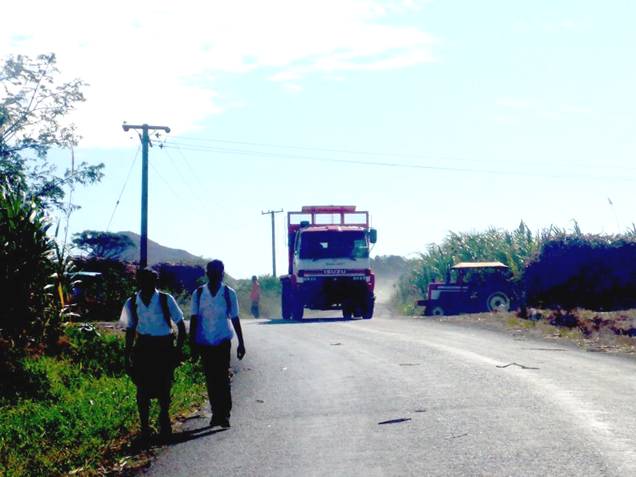
Agriculture
(especially sugar cane) and tourism are the
mainstays of the Rakiraki economy. The Fiji Sugar
Corporation operates the Penang Sugar Mill on the Penang
River
(see picture below).
|
|

|
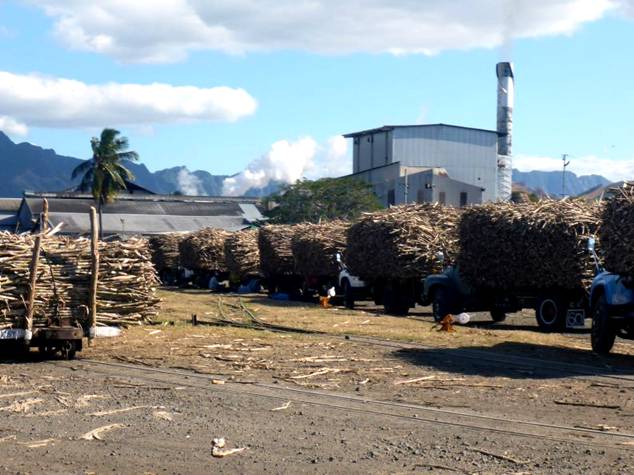
|
|

|

~~~ Some
street impressions from Rakiraki and the very busy
market. ~~~
|
|
Another day,
Michael and I thought we make the best of being so
close to some civilization and ask Ganguli to take
us out to Rakiraki's
nightlife. We invited him aboard first and started
with some drinks (he had also brought some weed -
seems to be rather common and popular here, next to
the Kava; also gives you a little better buzz - but
not quite legal of course…).
We learned he's the Captain of the
local soccer team and good in massages and has some
exotic adjustment techniques! But when in pain, you
try out almost anything…
|
It actually
felt good at that time, but unfortunately didn't have a lasting
effect.
The 'nightlife' turned out to be some
popular event at the Hindu Mariamman Temple in
Ellington.
It's a 10-day ceremony
that concludes on the following day with traditional
fire walking. We found a kind of a theatre play and
a lot of people hanging out. Interestingly, there's a lot of Cava
drinking, but no beers.
Unfortunately,
everything takes a long time and we missed the
promised dancing cause we just got too tired.
|
|
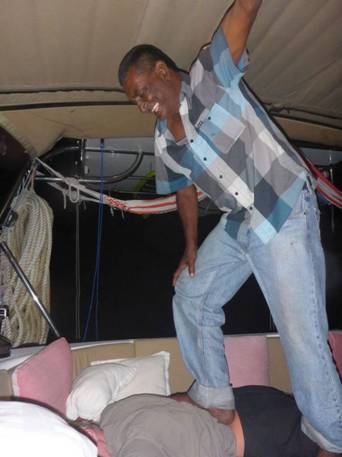
|
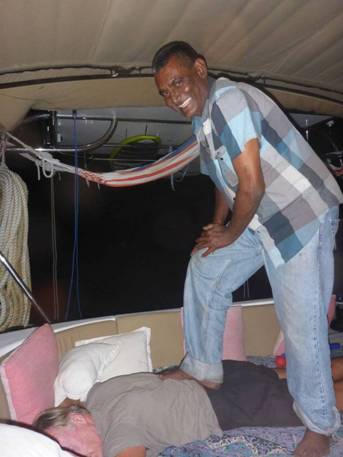
|
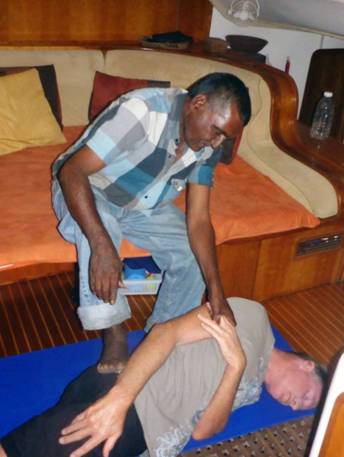
|
|
The next day,
Sara and I took up Ganguli on his offer and explored
a little bit of the surroundings and then attend the
fire walking ceremony.
(pictures
further down)
Below left:
The Navatu
Rock is in Vitawa village just south of Rakiraki. It
looks like a person's
profile and is believed to be one of Fiji's oldest human
settlements. Pottery excavated at the base of the
rock has been dated to around 1000BC.
Below right:
We also
passed the tomb of Ratu Udre Udre, a famous 19th
century cannibal chief who reportedly consumed more
than 800 of his victims. He kept a stone for each
body he ate; the stones were placed alongside his
tomb in Rakiraki, in northern Viti
Levu. According to Udre Udre’s son,
the chiefs of Rakiraki would go to the battlefield
along with Udre Udre and they would each give him
every body part of their victims, especially the
head, preserving what he couldn’t eat in one sitting
for consumption later.
It is
believed that if he had consumed his 1000th body, he
would have become immortal.
|
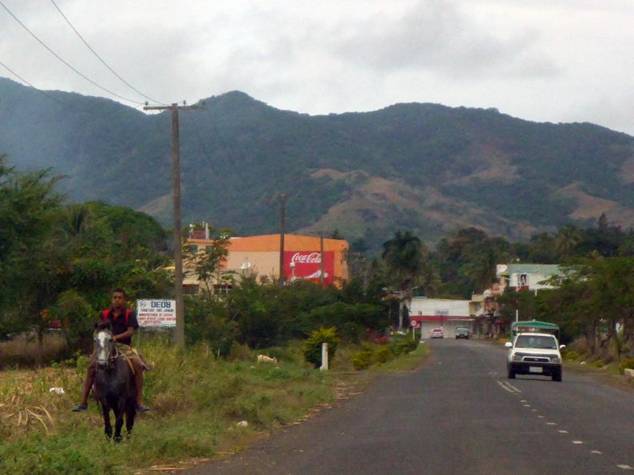
|
|
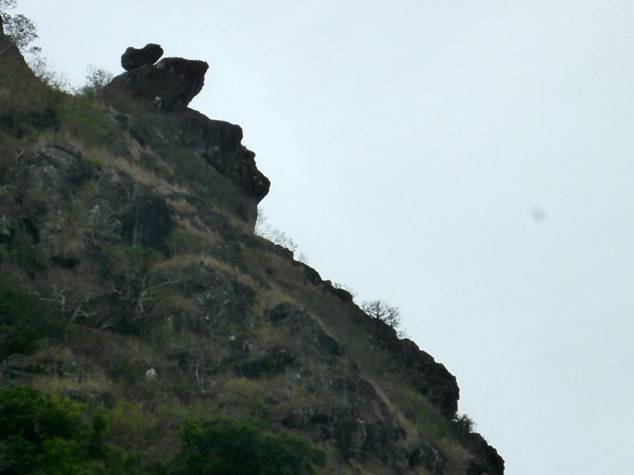
|
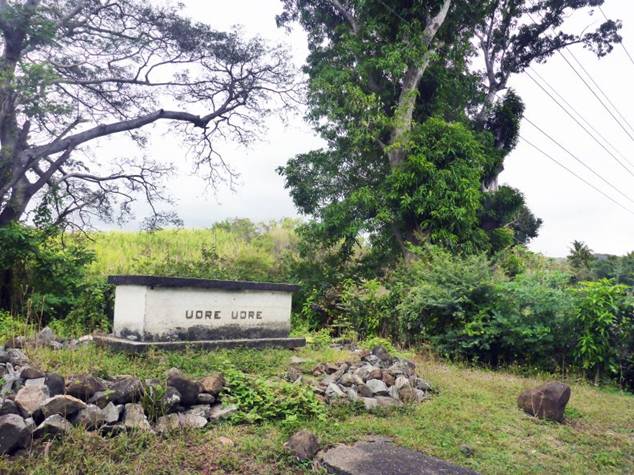
|
|

Two blondies
among a lot of Hindis. Not my best picture but I
wanted to be in the newsletter at least once… ;-)
|

Ganguli with
his wife and a friend and his son. I found the
sparkling diamond imitation e rings quite
impressing.
|
|

After the
fire walking the participants mark themselves with
blessed water, pray and receive 3 whips on arms and
back. Unfortunately, we couldn't get the exact
meanings of all the details from the entire ritual
from the locals and I don't
think it only has to do with the language.
Surely the
leaders would have been able to elaborate more, but
of course they've
been very busy with the ceremony.
|
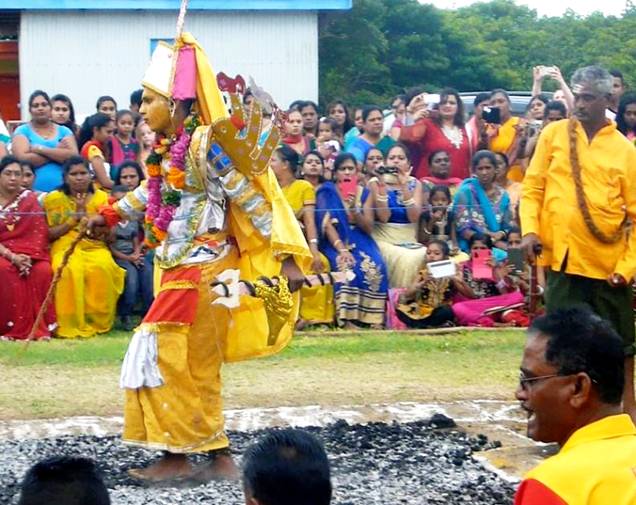
|
|

Wondering
about the 'Hakenkreuz' on the temple wall?
The name
swastika comes from the Sanskrit word svastika
"lucky object".
The earliest
known object with swastika-motifs is a bird from the
tusk of a mammoth from the paleolithic settlement of
Mezine,
Ukraine
dated to 10,000 BCE.
|
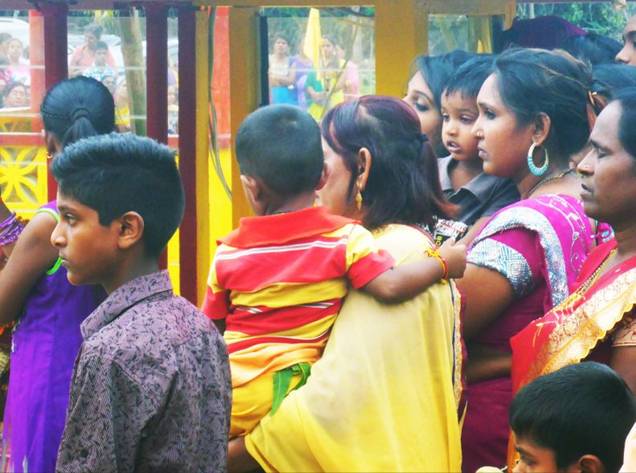
In Hinduism
it's been
used for about 5,000 years.
The red
coloured Swastika bent to the right stands for
sunrise, day, live, salvation, the male principle
and the god Ganesha and in general luck.
|
|

Ganguli
invited us to a cup of tea to his home. I felt shy
but now wish I would have taken some pictures
inside. I don’t think they would have minded.
|
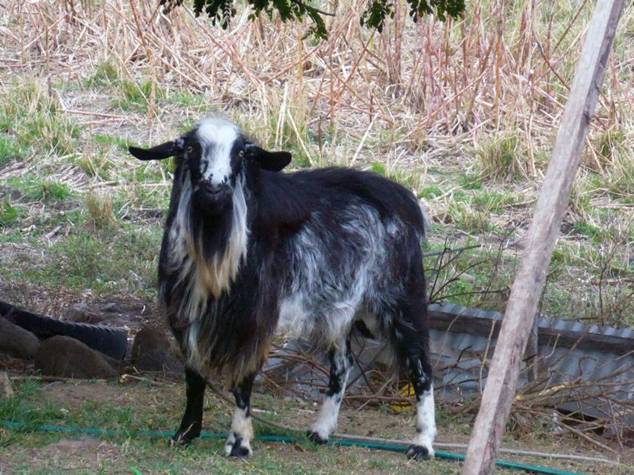
I took one
picture of their pretty young goat - quite a
mischevious one, too. A minute later he started
chewing up the laundry hanging above!
|
|
A day before,
Michael and I thought we make the best being so
close to some civilization and ask Ganguli to take
us out to Rakiraki's
nightlife. We started with drinks (and in his case
some weed - seems to be rather common and popular
here, next to the Kava; also gives you a little
better buzz - but not legal of course.)
|
|
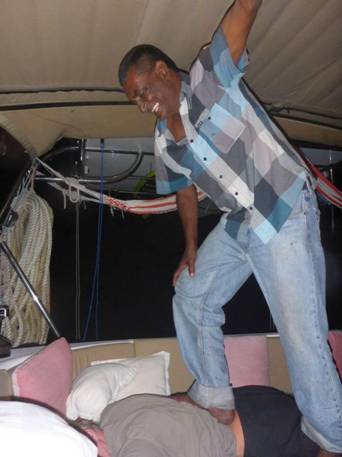
|

|
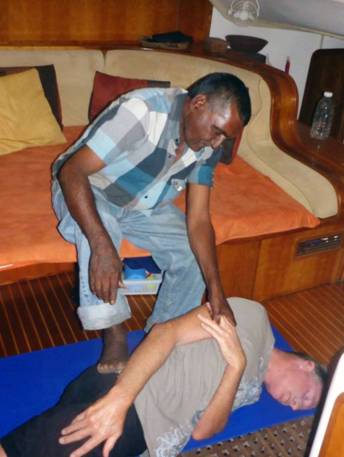
|
|

|
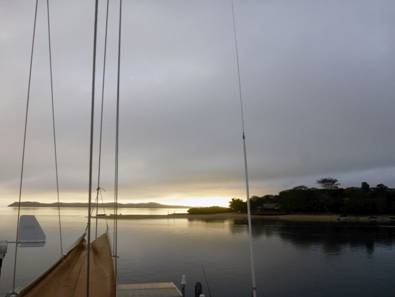
|

|
|
Our anchorage
in front of Volivoli Beach
Resort and behind Philip and Sara from Blubie.
Sometimes cloudy grey windless days make a magical
morning.
|
Still prefer
the golden sunlight. We came in time for the resort's weekly Friday Fijian
dance performance and really enjoyed the lovely,
kind and fun people.
|
|

|

|
|
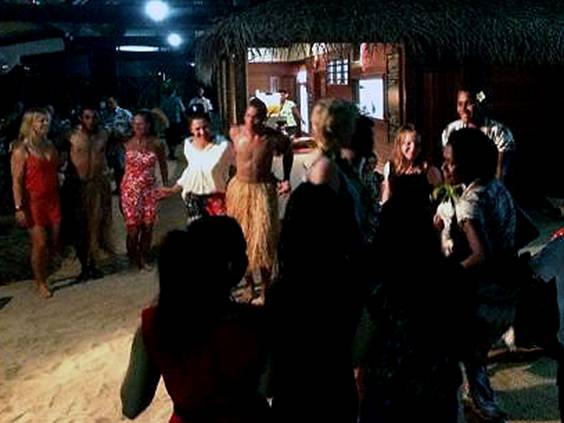
|

|
|
|
|
|
|
































